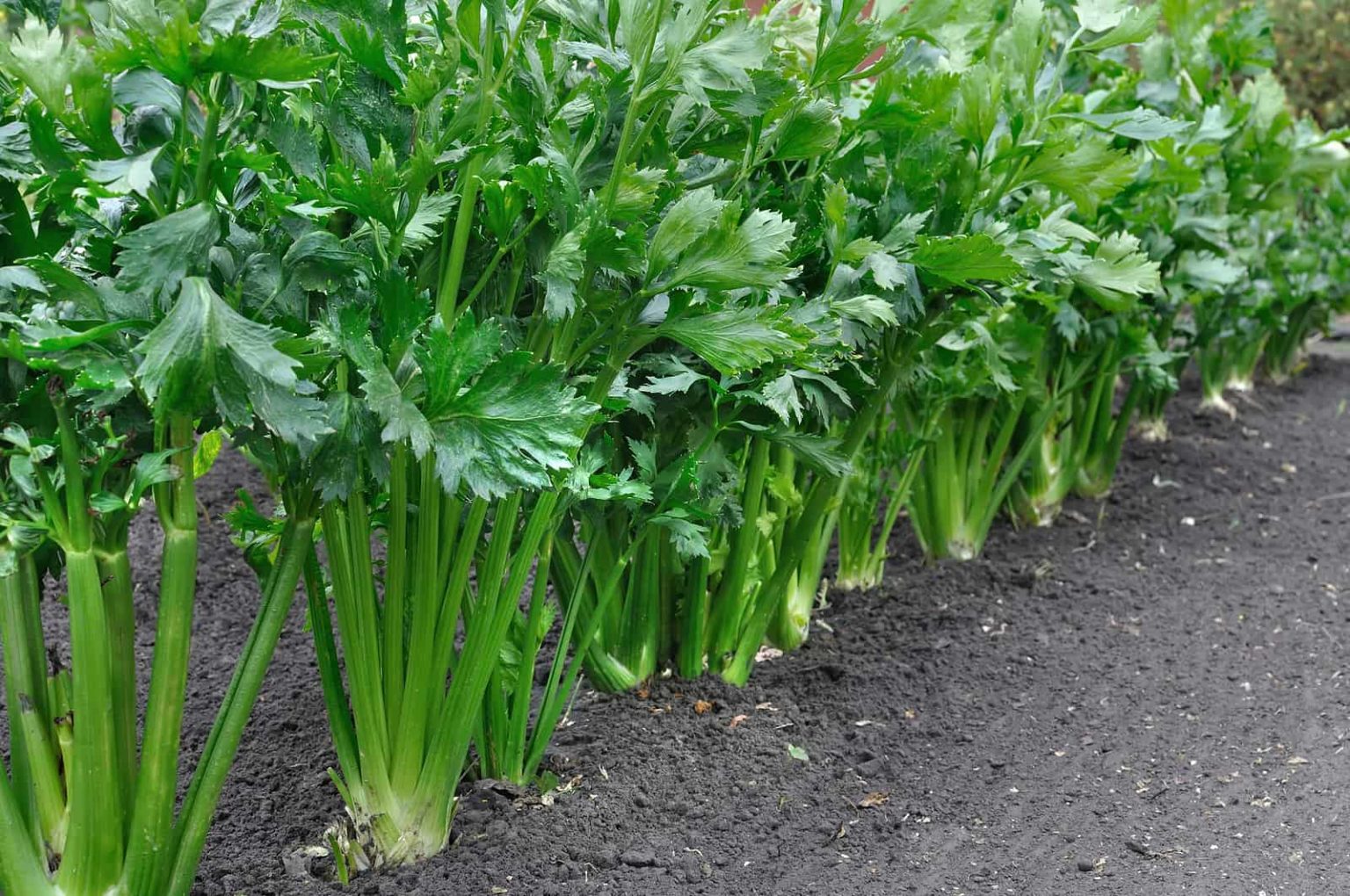
Celery
Apium graveolens
Basic Information
🌿 Family: Apiaceae🗺️ Zone: 2-10
Other Names:
- Stalk Celery
- Wild Celery (Apium graveolens var. graveolens)
🌡️ Ideal Temperature : 55°F – 75°F
🔥 Heat Tolerance: Up to 95°F
❄️ Cold Tolerance: Down to 20°F
🌱 Type: Annual
Layers
- Herbaceous
Functions
- Edible
- Medicinal
- Wildlife Attractor
- Mulcher
- Dynamic Accumulator
- Border Plant
Pests
No pests associated with this plant.
Description
Celery (Apium graveolens) is a cool-season biennial grown for its crisp, fibrous stalks and aromatic leaves. It grows upright with thick, ribbed stems that reach heights of 30–60 cm (12–24 inches). The leaves are deeply serrated, and in its second year, it produces small white flowers that attract pollinators.
Celery requires a long growing season and is highly sensitive to temperature fluctuations. It thrives in consistently moist, nutrient-rich soil and is often blanched by covering the stalks to improve their flavor and reduce bitterness.
🌞💧 Sun and Water Requirements:
- Prefers full sun but tolerates partial shade in warmer climates.
- Requires consistently moist, well-drained soil rich in organic matter.
- Sensitive to drought; regular watering is essential to prevent bitter stalks.
✂️🫘 Methods to Propagate:
- Seeds: Start indoors 8–10 weeks before the last frost; transplant when seedlings are 10 cm (4 inches) tall.
- Cuttings: Can be regrown from the base of store-bought stalks in water.
- Division: Rarely propagated by division due to its biennial nature.
🧑🌾👩🌾 When to Harvest:
- Stalks are ready for harvest 90–120 days after planting.
- Cut outer stalks as needed or harvest the whole plant by cutting at the base.
- Leaves can be harvested anytime for seasoning or drying.
Purpose
Celery serves multiple functions in a permaculture system:
- Edible: Stalks, leaves, and seeds are used in soups, stews, salads, and seasonings.
- Medicinal: Traditionally used as a diuretic and for anti-inflammatory properties.
- Wildlife Attractor: Flowers attract beneficial pollinators and predatory insects.
- Mulcher: Leaves and stalk residues break down quickly, improving soil quality.
- Dynamic Accumulator: Draws up minerals such as calcium and magnesium, enriching the surrounding soil.
- Border Plant: Used in garden edges and companion planting to enhance biodiversity.